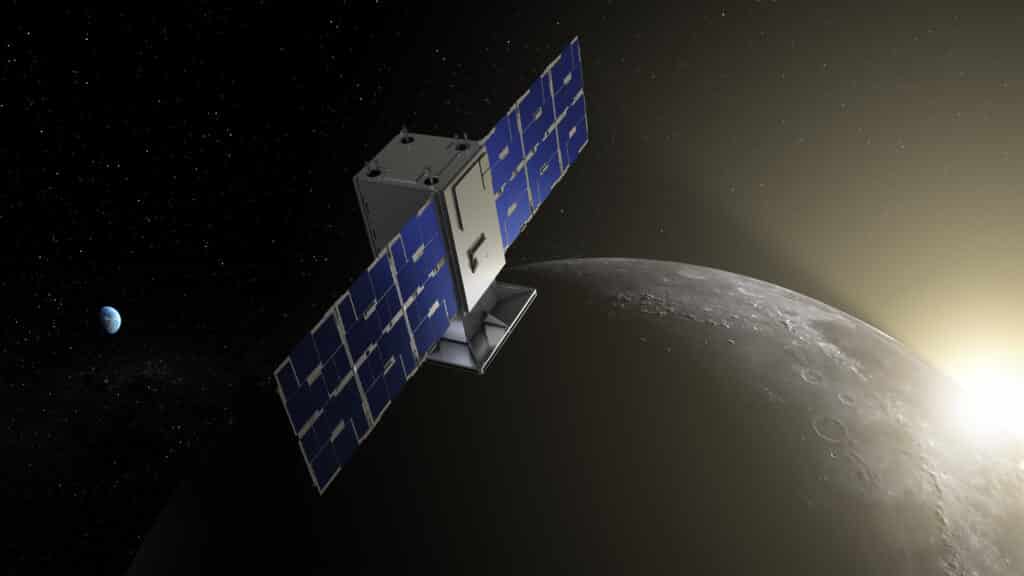
First mission of the new US lunar program did not go according to plan
(ORDO NEWS) — As part of the Artemis program, it is planned to create a manned station in orbit around the moon.
Since the gravitational field of the Earth’s satellite has strong local perturbations, it is difficult for spacecraft to stay in circumlunar orbits for a long time.
To test one of the possible stable trajectories, NASA launched the CAPSTONE mission, but almost immediately after separation from the upper stage, communication with the probe was lost.
The CAPSTONE spacecraft was successfully launched on June 28 on a Rocket Lab Electron rocket from the Mahia Space Center in New Zealand.
Over the next six days, the Photon upper stage made several trajectory adjustments, raising the orbit’s apogee to about 1.3 million kilometers. Then, on July 4, payload separation occurred , and the probe continued on a ballistic lunar transfer trajectory ( BLT, ballistic lunar transfer ).
However, the next day, the US National Aeronautics and Space Administration ( NASA ) reported that communication with the device was broken. The deep space communication system ( DSN ) successfully exchanged data with the CAPSTONE probe only once (station in Madrid, Spain).
The second session, already with antennas in Goldstone, California, was called partly successful by NASA . Communication was restored only on July 6, but the reasons for the failure are not yet known.

Based on the available information, NASA experts found that the device is on the calculated trajectory, and its systems (with the exception of communications) are working properly: the solar panels have opened, the onboard battery is charging.
The planned firing of the engines on the 5th had to be postponed, but CAPSTONE has enough fuel on board to make a trajectory correction later.
At the time of this writing, NASA has not released any details about the cause of the communications system failure. Is it a software failure or a hardware failure - we will find out in the coming days.
However, the mission control team believes that the first trajectory correction can be safely carried out as early as today, July 7th.

The name CAPSTONE stands for Cislunar Autonomous Positioning System Technology Operations and Navigation Experiment - “Experiment for the operation and navigation of a circumlunar autonomous positioning system.”
The objective of the mission is to make sure that the lunar manned station Lunar Gateway can be placed in a new type of orbit. It’s called “almost rectilinear halo orbit” ( near-rectilinear halo orbit, NRHO ), and theoretically it has many advantages.
Thanks to the cunning use of the gravitational influence of the Moon, the Earth and the Sun at the same time, the device can stay on such a trajectory for a long time without significant fuel consumption.
Another orbital mechanics trick that CAPSTONE uses is the ballistic transition from Earth orbit to NRHO . It is ideal for unmanned vehicles, because, again, by exploiting gravitational disturbances from the Moon, Earth and Sun, it allows you to get to the circumlunar space, saving a huge amount of fuel.
True, such a flight takes more than four months. But in the same mass of the probe, it turns out to fit more payloads, such as scientific instruments and repeaters.
For CAPSTONE, the engineering and scientific goal will be to develop navigation in the vicinity of the Moon and on its surface without the use of ground and near-Earth communication stations.
To do this, the device will track its position in space through another probe, the Lunar Reconnaissance Orbiter ( LRO ), which has been operating since 2009.
Although CAPSTONE is a 12U cubesat - that is, it is approximately the size of a microwave in size and has a mass of about 25 kilograms - this is the de facto first full-fledged mission under the Artemis program.
Interestingly, NASA completely “outsourced” the creation, launch and management of the spacecraft to a commercial contractor. And this is also extremely characteristic of the new lunar program of the United States of America.
—
Online:
Contact us: [email protected]
Our Standards, Terms of Use: Standard Terms And Conditions.








